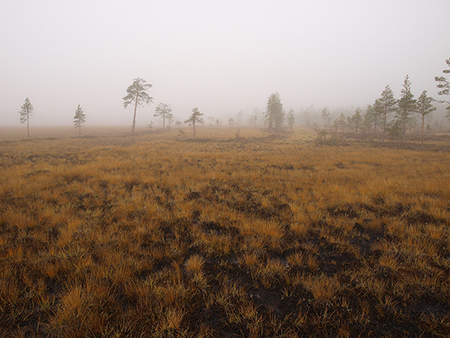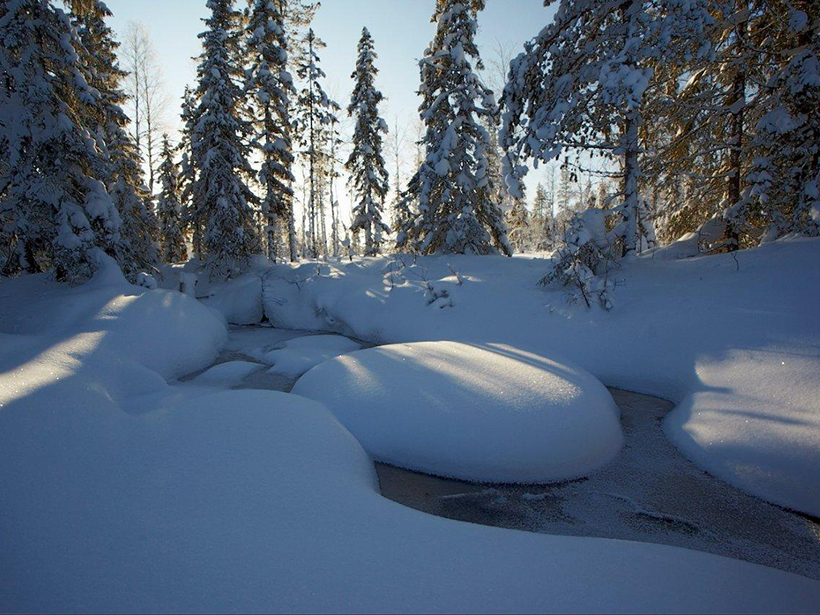Source: Journal of Geophysical Research: Biogeosciences
Peatlands—bogs, swamps, and mires—act as vital carbon sinks, keeping billions of metric tons of carbon dioxide out of the atmosphere. However, streams carry carbon—mainly as dissolved organic carbon and carbon dioxide—away from those peatlands, eventually releasing the greenhouse gas back into the atmosphere. Previous research has shown that as much as 30% to 50% of the carbon taken up from the atmosphere by peatlands can be lost through runoff, prompting scientists to pay closer attention to carbon export via streams to predict how climate change will affect not just these shallow waters but the global carbon cycle as a whole.

Here Leach et al. used a 12-year record of carbon measurements to study a particular 3-square-kilometer catchment located in a mire in northern Sweden. In this catchment,70% is peatland, and 30% is coniferous forest.
The new data suggest that streams might have an even larger role to play in removing carbon than previously thought. The team found that during exceptionally dry summers as much as 90% of total annual carbon emitted from peatlands is likely lost from runoff—significantly higher than the previous estimates of 50%. Further, the rate of carbon release from mires is mainly influenced by high water flow; carbon export, for example, increases substantially when rains arrive in the fall and in response to melting snow during spring. As water levels drop during the summer, little carbon moves out of the peatlands in streams.
Climate change projections predict increases in precipitation and air temperature for northern Europe, with the greatest temperature increase during winter and the greatest precipitation increase from April to September. This means that streamflow—and therefore carbon export—will increase in both the winter and summer months. It might, however, decrease in spring since snowmelt will be less substantial. Additionally, the results suggest that omitting dissolved carbon dioxide from future calculations might result in underestimating stream carbon export by up to 30%. (Journal of Geophysical Research: Biogeosciences, doi:10.1002/2016JG003357, 2016)
—Shannon Hall, Freelance Writer
Citation:
Hall, S. (2016), Headwater streams may export more carbon than previously thought, Eos, 97, https://doi.org/10.1029/2016EO057411. Published on 17 August 2016.
Text © 2016. The authors. CC BY-NC-ND 3.0
Except where otherwise noted, images are subject to copyright. Any reuse without express permission from the copyright owner is prohibited.

